The history of military parades on Red Square
Despite the change of government, social systems, and even the name of the country, colorful rituals were held at the Kremlin walls for decades for the elite of the army and fleet. The main purpose of the military parade, in addition to the magnificent extravaganza, is to demonstrate the readiness of our country at any time to repel the military invasion of enemies, make them suffer severe punishment for encroachments on the holy Russian land.
History military parades began in the middle of the 17 century, when the market square, Torg, in front of the walls of the Kremlin still did not bear the current name. Then Torg was the place where the royal decrees were announced, public executions were carried out, the trading life was boiling up, and on holy holidays it was here that mass religious processions were held. The Kremlin at that time had the appearance of a well-fortified fortress with gun turrets and a huge moat encircling it, bounded on both sides by white-stone walls.
The word "red" in Russia at that time called all beautiful. The square with the marvelous hipped domes on the Kremlin towers became so-called under Tsar Alexei Mikhailovich. By this time, the fortress had already lost its defense significance. Gradually it became a tradition for the Russian troops after another victorious battle to proudly pass through the central square past the Kremlin. One of the most spectacular sights of ancient times was the return of the Russian army from Smolensk in 1655, when the king himself walked ahead with his head bare, carrying his little son in his arms.
Many historians believe that the first parade that took place on October 11 on 1702, can be considered the first after the army led by Peter the Great returned after taking the fortress Oreshek (Noteburg). On that day, the Butcher’s Street was covered in red cloth on which the king’s gilded carriage passed, dragging Swedish banners on the ground. Another group of experts is inclined to say that the first is the parade of 1818 of the year, held in honor of the opening of the monument to citizen Minin and Prince Pozharsky known to all guests of the capital. At that time, Red Square already had its usual outlines and became quite suitable for military parades. The protective moat was filled up, and in its place a boulevard appeared. Opposite the Kremlin wall was built the building of the upper trading rows. During the coronation celebrations, the emperor's motorcade passed through the square, heading for the Spassky Gate to enter the Kremlin.
Military parades became more widespread at the end of the 18 century. In St. Petersburg, they were held traditionally twice a year: in the winter at the Palace Square, and in the spring at the Field of Mars. And in the First Throne procession, the troops were organized from time to time and held on the territory of the Kremlin. Although there were exceptions. For example, on May 30 of 1912, when the monument to Emperor Alexander III was unveiled near the Cathedral of Christ the Savior, a solemn procession of military units, headed personally by Nicholas II, took place near the new monument. Then the king was followed by a company of palace grenadiers and a consolidated infantry regiment, which is the predecessor of the current Presidential regiment in Russia. Then, saluting the tsar, the guardsmen, wearing the helmets with eagles and white elite tunics, performed the honorary function of the imperial guard, wearing helmets with eagles The last Moscow parade with the participation of Nicholas II took place on 8 on August 1914, that is, just a week after the start of the First World War. In honor of the birthday of the sovereign, a military review was held in the Kremlin, but on Ivanovskaya Square.
Shortly after the abdication of Nicholas II in the spring of 1917, when power was transferred to the Provisional Government, the revolutionary army led by the commander of the Moscow garrison Colonel Gruzinov took place on March 4. All Red Square and the streets adjacent to it were occupied by a festive crowd, over which airplanes cruised. An endless stream of people stomping in orderly rows in military overcoats with gleaming bayonets moved across the square. That is how witnesses remembered the first parade in the history of the new Russia.
In March, 1918, after the Bolsheviks seized power and the general euphoria of bourgeois revolutionary change was replaced by political chaos, a fratricidal war and a complete collapse of the economy, the top management moved from Petrograd to Moscow. Since then, Red Square has become the main venue for all state celebrations, and the Kremlin is the permanent residence of the country's government.
When on the Kremlin walls, Nikolskaya and Spasskaya towers were still visible traces of the November 1917 battle, the tribune for a parade in honor of 1 was celebrated in the spring of 1918 in May among the fresh revolutionary graves of revolutionaries. The construction of a tree in the form of a rectangle has become a kind of monument to the victims of the struggle for a "bright future." On that day, a column of demonstrators consisting of Red Army men and civilians began their movement from the Historical Passage to the St. Basil's Cathedral. The first parade of the Red Army, in which, according to an official statement, about thirty thousand people participated, took place on the same day on the Khodynka field, and was headed by the military commissar Leo Trotsky. At that parade, it was not without incidents: the regiment of Latvian riflemen, which were then used to protect the government, left the venue of the parade in full force, expressing their distrust of Trotsky.
Despite the originally adopted Bolshevik declaration of abandoning imperial traditions, military parades and marches have not lost relevance. The next solemn passage of troops took place in honor of the first anniversary of October and already in Red Square. By 7 November 1918, the central square of the country was hastily put in order, and the leader of the proletariat Vladimir Ulyanov-Lenin personally welcomed the memorable procession. It should be noted that the first parades of post-revolutionary Russia were little reminiscent of the military processions of the Tsarist army, they were more like folk processions with the participation of the military.
Since then, parades began to take place on various occasions. For example, in March 1919, a march took place dedicated to the Moscow congress of the Third International. And on the May Day parade in the same year, a tank was driving along Red Square for the first time after the columns. 27 June 1920 of the year was held in honor of the congress of the Second International, which was organized more professionally. An interesting view was the central stand, which was similar to the observation point on the top of a hill, and military formations were moving not randomly, but in orderly rows. 1 May 1922-th year in the regulations of the military parade, a new ceremony related to the adoption of the military oath. This tradition was preserved until the 1939 year. Like the parades of the imperial army in the first post-revolutionary processions, the calculations moved in long lines of two ranks. It was quite difficult to move in clear rows on the broken stone pavement in this order.
The following significant changes in the appearance of Red Square occurred after the death of Lenin, the first head of the Country of Soviets, in the 1924 year. Opposite the Senate Tower a temporary tomb of the Leader of the Revolution was built. Four months later, in its place, a wooden mausoleum appeared with stands at the sides. It was from these stands that from now on all the leaders of the country began to greet the demonstrators during the marches. And at the entrance to the mausoleum appears post number XXUMX, which is constantly on duty cadets of the military school.
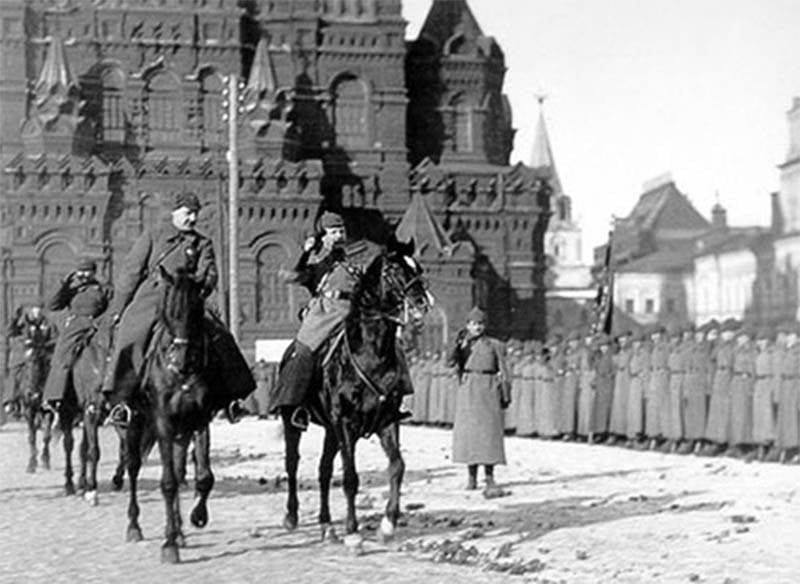
On February 23, 1925, Mikhail Frunze, who replaced Trotsky as head, did not bypass for the first time, but bypass military installations, riding on horseback. The last parade with the participation of this hero of the civil war was the May Day festive procession of 1925, at which the first salute of salute from cannons installed inside the Kremlin was given. Voroshilov, who after Frunze assumed the duties of host to the parade, also traveled around on horseback. Since May 1, 1925, representatives of various branches of the army were dressed in the uniform in uniforms at the parade, and the variegation of uniforms that were previously present was no longer observed. Against the general background, only a company of Baltic sailors and a column of the higher school of military disguise stood out with white visors. In addition, infantry formations now took place in a new "chess" order. Following them moved cyclists-scooters, cavalry and, finally, armored vehicles represented by armored vehicles and tanks. From this day until our times, the mass passage of military equipment during the parades has become a mandatory item. This May Day parade was distinguished by another innovation, namely the participation aviation. During the procession over the area in an unstable wedge, eighty-eight airplanes flew by.
A distinctive feature of the November 7 parade was the fact that it was received by a civilian, Chairman of the Central Executive Committee Mikhail Kalinin, although the Chairman of the Revolutionary Military Council Voroshilov was in charge of the parade. At this festive procession there were no armored cars and tanks, as the situation in the country was tense to the limit. Stalin, who is on the sidelines, was afraid of a military coup, since Trotsky's authority in the army was still quite high. But in the parade was attended by the consolidated North Caucasian Cavalry Regiment, which with a whoopie raced across the square in black burkas.
In the 1 parade of May 1929 of the year, Red Square for the last time appeared in its old form with a completely broken pavement and an inappropriate wooden mausoleum among the stone walls. The lampposts standing in the middle of the square considerably limited the width of the passing columns and made it difficult for the vehicles to pass. Due to the poor condition of the paving stones, each parade had to be sprinkled with sand to facilitate the movement of military equipment and reduce the slip of horse hooves. Domestic-made armored vehicles for the first time passed in this May Day parade on Red Square, but there were no combat weapons on the vehicles, which were replaced by shrouded dummies. Equip technique weapons simply did not have time. But at the November 7 parade, all combat vehicles already had full-fledged standard weapons.
The May Day parade of 1930 was held in conditions when most of the square was fenced with a fence, behind which a new stone mausoleum of Lenin was erected at an accelerated pace. The reconstruction was completed by November of the same year 7. The square was paved with the strongest diabase pavers, and greatness was now added to it by a new mausoleum, lined with red granite. Tribunes at that time were located only on the sides of the tomb. When shooting this parade, live sound was recorded for the first time.
From parade to parade the number of its participants and military equipment constantly increased. The only problem was that the narrow Resurrection Gates of Kitay-Gorod restricted the passage of combat vehicles. In 1931, these gates were finally demolished, and the monument blocking the passage to Minin and Pozharsky was moved to St. Basil's Cathedral. The Kazan Cathedral was demolished in 1936, and Vasilyevsky Spusk was cleared of buildings. In the heat of the moment, the historical museum and the Temple were nearly removed, but prudence prevailed, and the priceless monuments remained in place.
The tradition of extraordinary military parades was clearly seen in the 30s. The February 9 commemorative parade, dedicated to the XVII Party Congress, was striking in its scale. Forty-two thousand servicemen participated in it, of whom twenty one thousand were infantrymen, and seventeen hundred horsemen. On that day, five hundred twenty-five tanks proceeded through the central square of the country, and the parade itself lasted more than three hours! The review showed that over the five-year period the technical equipment of the Red Army has increased many times, turning it into a formidable, well-prepared force, which was noted by the foreign diplomats and correspondents present. The Times wrote that the Soviet Army did indeed show first-class discipline and organization, although it indicated the fact that one tank, a naval machine gun, and a searchlight were out of order during the march. Such confusions, of course, sometimes happened. In the event of an unexpected breakdown of the equipment, detailed plans were developed for its quick evacuation away from the eyes of observers. However, at the parade in 1934, one foreigner took pictures of the collision of two carts.
In response to the beginning of the militarization of Germany and the changing political situation in Europe in 1935, Stalin decides to demonstrate the full power of the Soviet military forces. Five hundred tanks took part in the May Day parade, eight hundred aircrafts took to the air, the flagship of which was the eight-engine Maxim Gorky, accompanied by two fighters. Following them in several tiers, bombers flew in and literally closed the sky over the square with their wings. A real furore caused the five red And-16 that appeared in the sky. Having dropped almost to the battlements of the Kremlin wall, these fighters roared over the audience. According to Stalin’s order, each of the five pilots received not only a cash prize, but also an extraordinary title.
Since the imperial eagles located on the towers of the Kremlin and the historical museum did not fit into the overall picture of Red Square, in the fall of 1935 they were replaced with stars made of metal with Ural gems. Two years later, these stars were replaced with red and ruby illuminated from the inside. In addition, at the end of the 30s, a central tribune was installed in front of the mausoleum, which now stood above the inscription "Lenin", symbolically emphasizing the importance of the people standing on it.
May Day Parade 1941 year was the last peaceful march of the pre-war country. In the conditions prevailing in Europe, the demonstration of the power of the USSR was of particular importance, especially when you consider that among the foreign representatives were the top ranks of the Wehrmacht. Budyonny believed that how well the Soviets would show their power and preparation might depend on whether the Soviet Union would be drawn into a confrontation with the Germans. The enormous moral tension led to the fact that some participants simply lost consciousness, and therefore almost everyone had a bottle of ammonia in their pockets. The speech of Marshal Timoshenko from the rostrum had a clearly traceable basic idea - the desire of the USSR for a peaceful policy. The novelty of this parade was the participation of motorcycle units that were just beginning to form in the Red Army. Significant was the indicative departure of the newest dive bombers. However, according to the report of one of the Wehrmacht officers after the parade, “the Russian officer corps was in a deplorable state and made a pitiful impression,” and “the USSR will need at least twenty years to restore the lost commanders”. Based on what the stated conclusions were made, we can only guess.
One of the most memorable and significant was the ceremonial parade of troops, sent from Red Square directly to the front, held on November 7 of 1941. These days, the front as close as possible to the heart of our Motherland and was at a distance of seventy kilometers. The stars of the Kremlin towers were covered with covers, and the gilded domes of the cathedral were painted over for security and camouflage. Despite Hitler’s desire to mark the anniversary of the October Revolution with a parade of German troops in the center of Moscow, the Soviet leadership organized its own parade, the purpose of which was to instill confidence in our compatriots and dispel the chaos and hopelessness that prevailed at that time in the capital.
The decision to hold the parade was announced on the night before 6 in November by Stalin personally at the ceremonial meeting, which began twenty minutes after the air raid, caused by the attempt of two hundred German bombers to break through to the capital. Preparation for the parade was held in the strictest secrecy, and the event itself was equated with a military operation. To ensure safety, the start of the parade was scheduled for eight in the morning, and all its participants were instructed in the event of an air raid. The parade was hosted by the Deputy Commissar of Defense, Marshal Budyonny, who was accompanied by the parade commander, Lieutenant General Artemyev.
The first and only time on that day, Stalin delivered a speech from the podium of the mausoleum, calling his compatriots sisters and brothers. His speech, full of patriotism, had the expected effect, inspiring the fighting soldiers and residents of the capital to the inevitability of our victory over the aggressor. About twenty-eight thousand people took part in the solemn 7 parade of November 1941, and the most numerous were the NKVD troops in the amount of forty-two battalions. An interesting fact is that the beginning of the parade was not recorded on film, as for the purpose of secrecy, filmmakers were not warned about the upcoming event. Operators with cameras arrived at the square later, after hearing the broadcast from the parade on the radio.
In that memorable parade for the first and last time, the previously secret T-60, T-34 and KV-1 tanks took part. Unlike other celebrations, military equipment was supplied with ammunition in case an order was received to advance to the front, but the strikers were nevertheless withdrawn from the safety implements and were kept by the crews' commanders. After this symbolic November parade, the whole world realized that the USSR would never submit to the enemy. A commemorative reconstruction of this procession took place seventy years later in November of 2011, and since then it has been held annually on November of November.
The next triumph in Red Square passed only after three and a half years 1 on May 1945, when everyone was already waiting for victory, and in the depths of the fascist lair the last bloody battles were fought. Up to 1944, the “Internationale” was played at military parades, which was the country's anthem. At the May Day parade of 1945 for the first time, a new anthem of the USSR was played. A year later, the People's Commissariat of Defense will be renamed the Ministry of Defense, and the Red Army will be called the Soviet.
The triumphant parade of the 1945 was even more solemn and jubilant. The decision to hold the holiday was made by the leadership of 9 in May, and two weeks later the command of the command was given that each front should allocate a consolidated regiment of 1059 people to participate in the march. 19 June in Moscow by plane was delivered victoriously hoisted over the Reichstag red flag. That it was obliged to be present at the head of the column, and those who directly hoisted the flag in Germany were to carry it. However, in preparing for the parade, these heroic people showed unsatisfactory ability to drill, and then Zhukov ordered the transportation of the banner to the museum of the Armed Forces. Thus, in the main parade of the 20th century, which was held on 24 on June 1945, the main symbol of victory did not take part. He will return to Red Square only in the anniversary 1965 year.
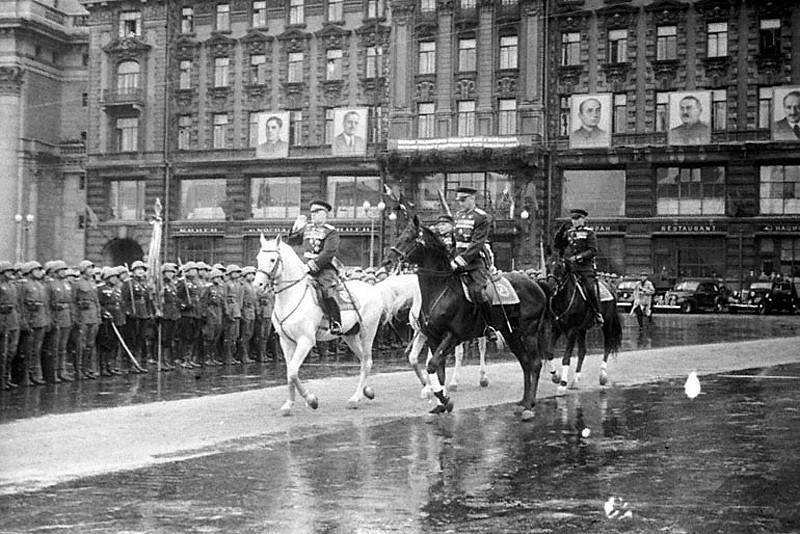
The Victory Parade was taken by Marshal Zhukov, accompanied by his adjutant, riding a white stallion in the pouring rain, which slightly spoiled the solemn atmosphere of the event. The parade itself was first filmed on a color trophy film, which had to be shown in Germany. Unfortunately, due to color distortion, the film was later transferred to the black and white version. The sequence of the consolidated regiments was determined by the order of the fronts in the conduct of hostilities to the end of the war from north to south. He led the march of the regiment of the 1 of the Belarusian Front, whose fighters hoisted a banner in Berlin. And the apotheosis of the holiday was the deposition of enemy German flags at the Mausoleum. The parade lasted just over two hours. The demonstration of workers, Stalin ordered to exclude from the program of the holiday. Muscovites and front-line soldiers waited a long time for the very speech of the country's leader, but the Leader never addressed his people. Only Marshal Zhukov uttered several phrases from the podium. There was no symbolic minute of silence in memory of the dead during the holiday. A film about the parade spread all over the country and everywhere it was viewed with full notice. It is necessary to clarify that only two decades later in the 1965 year, the 9 day of May will become the official holiday of Victory.
12 on August 1945 on the Red Square again held a parade, but it was a procession of athletes, which was characteristic of the 30-s. A remarkable fact of this event was the fact that on the podium of the Mausoleum for the first and last time were representatives of the United States. The large-scale event with the participation of twenty-three thousand participants lasted five hours, during which the continuous movement of the columns continued, and most of the area was covered with special green cloth. Impressions from the sports parade led Eisenhower to say that "this country cannot be defeated." At the same days atomic bombs were dropped on Japanese cities.
In 1946, the question of the passage of tanks through Moscow was acutely raised due to the emergency post-war condition of the houses, which were simply destroyed by the movement of heavy vehicles through the streets. Before preparing for the large-scale review of 8 tank technology on September 1946, the chief mayor was heard, and now the route of the vehicles is being developed taking into account the state of the capital’s housing stock.
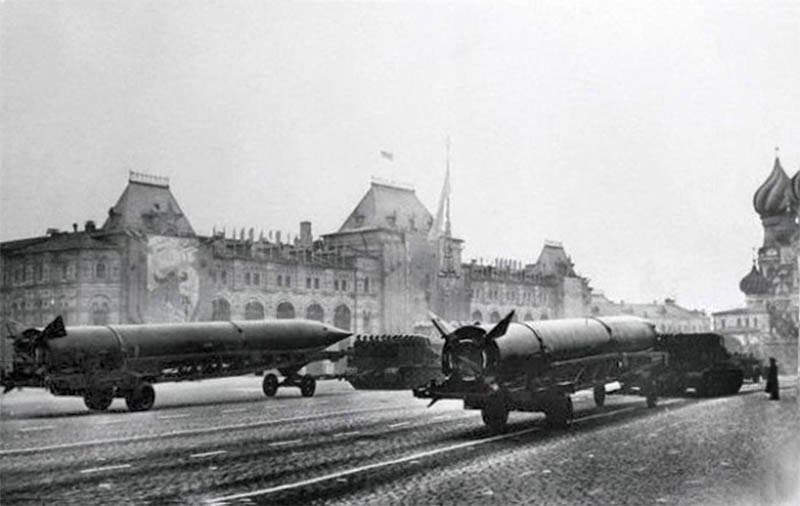
From the 1957 parade, the demonstration of various missile systems will become a tradition. In the same year, the aircraft did not speak at the celebration due to non-flying weather. The participation of pilots in parades on the main square will resume only forty-eight years later at the May 2005 parade.
Starting with the May Day parade of 1960, military parades have become a kind of formidable symbol of the confrontation between two political worlds. This celebration began with the decision of Khrushchev, who was then in power, the decision to destroy the U-2 reconnaissance aircraft, which broke into the sky over the USSR and proceeded to the Urals. Emotional Nikita Sergeevich took this impudence as a personal insult. A decisive answer with the help of an anti-aircraft complex put an end to the possibility of peacefully resolving the issues that were ripe between Britain, the USA and the USSR
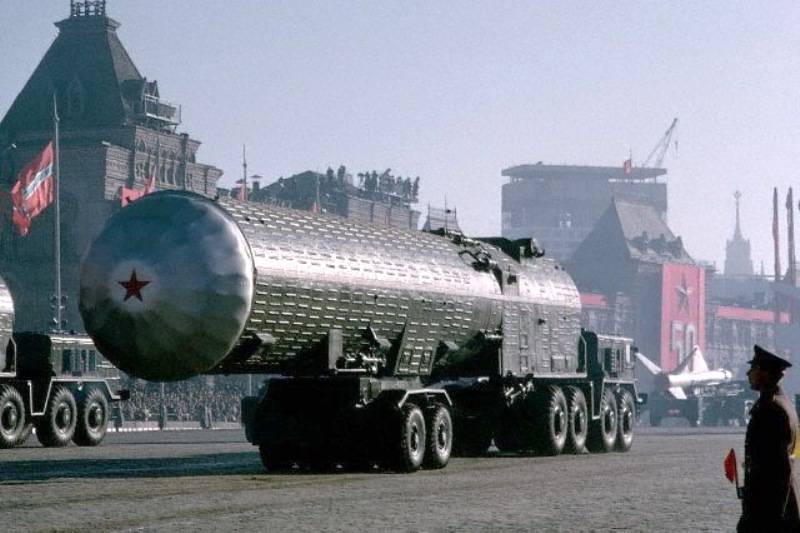
From 1965, for the next eighteen years, L.I. took military parades on Red Square. Brezhnev. The order of location of the main persons of the country on the podium of the mausoleum in those years spoke eloquently about the preferences among the leaders and the attitude of the first person to those close to them.
The 1 parade of May 1967-th, held in the year of the 50 anniversary of Soviet power, was distinguished by a theatrical historical show with the participation of columns of Red Army men dressed in overcoats of the Civil War model, commissars in leather jackets and sailors rigged with machine gun ribbons. After a long temporary break, a squadron of cavalrymen reappeared on the square, followed by carriages with machine guns thundering along the cobblestones. Then the procession was continued by armored vehicles imitating samples of the beginning of the 20 of the 20th century with the built-in “Maxim” machine guns.
In 1968, the last May Day military parade took place. From this year on, the celebration of 1 in May only squares of workers passed through the square. And the military equipment for the review was taken to the square only once a year on November 7. In the years of stagnation, which lasted twenty years and led to the collapse of the USSR, after the signing of an arms reduction treaty in 1974, the last time on the Red Square people were shown intercontinental ballistic missiles. In the 1975 and 1976 years, armored vehicles did not take part in parades and the celebrations took only thirty minutes. However, on November 7, the 1977 of the year, tanks appeared again on the main parade of the country. And on November 7, 1982, Brezhnev for the last time appeared on the platform of the mausoleum.
After the change of several 11 managers in March 1985, Mr. M. was in power. Gorbachev. At the parade in honor of the 40 anniversary of the 9 victory in May of 1985, passing according to the usual scenario, not only Russian soldiers, participants of the Second World War, but also Poles, as well as veterans from the Czech Republic, passed in the veterans column.
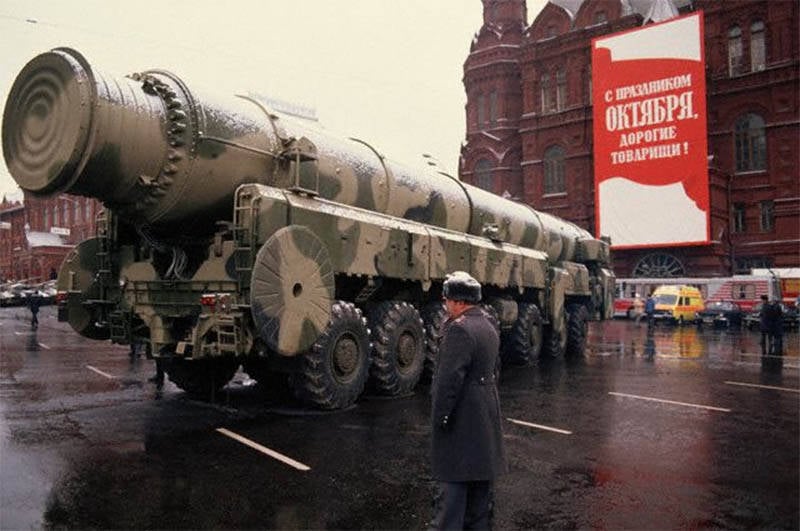
The last parade of Soviet power on Red Square was held on November 7 on 1990, when head of state Mikhail Sergeyevich, like Stalin, gave a speech from the podium of the Mausoleum. However, his appeal to the people was full of trivialities and hackneyed phrases. Soon after that, the collapse of the USSR followed with the division and division of the property of the army ...
Victory parades in honor of the feat of the Russian people in the Great Patriotic War began to be held only on anniversaries, they took place in the 1985 and 1990 years. From 1991 to 1994, this tradition was completely forgotten. However, in 1995, Russia received an order from 19 in May, according to which, in honor of the 50 anniversary of the Great Victory, the tradition of commemorative celebrations and parades in the hero-cities was revived, but the participation of military equipment, which caused great damage to their infrastructure, was revived. In the same year, demonstrations were held at Poklonnaya Gora, where new models of combat vehicles and equipment were demonstrated. And on the main square of the country were a few columns of war veterans.
Starting from 9 in May of 2008, military parades on Red Square once again became regular, resumed seventeen years later. Today's parades are significantly different not only by the increased technical capabilities and the presence of a mass of colorful special effects, but also by an unprecedented amount of technology involved, not only military, but also film, which allows you to show the event in the most favorable angles and make close-ups of any place or person. In addition, a huge screen is being installed in the stands, to which a live picture of the parade is being displayed.
Information sources:
-http: //www.12min.ru/drugoe/parad-na-krasnoj-ploshhadi-ot-istorii-do-nashix-dnej.html
-http: //www.tass-ural.ru/details/spravka_istoriya_voennykh_paradov_na_krasnoy_ploshchadi.html
-http: //www.mosoblpress.ru/regions/23/mass_media/3/108/item104578/
-http://goup32441.narod.ru/files/ogp/001_oporn_konspekt/2006/2006-09-3.html
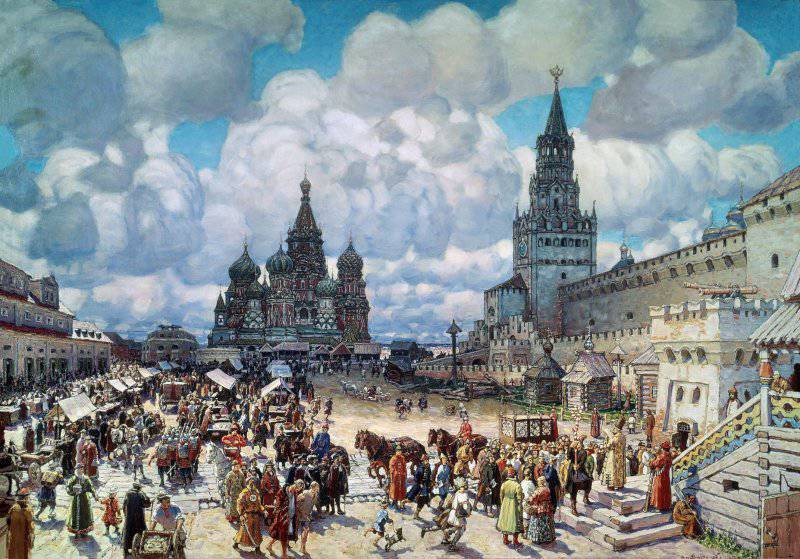
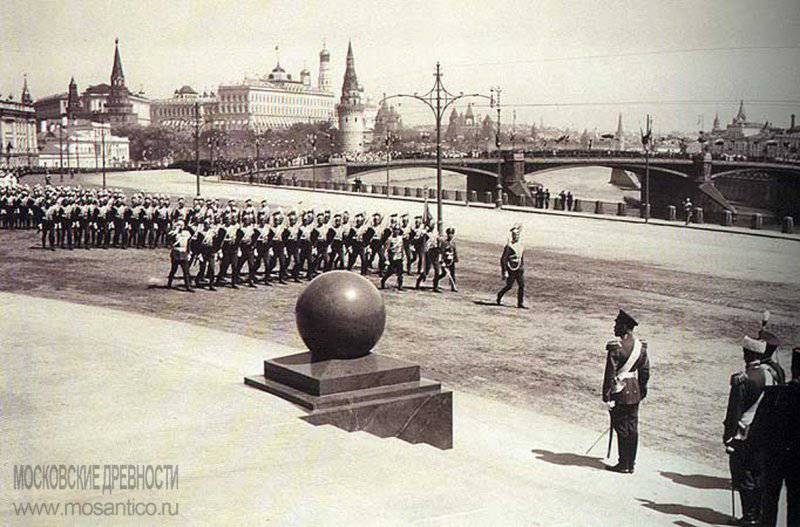
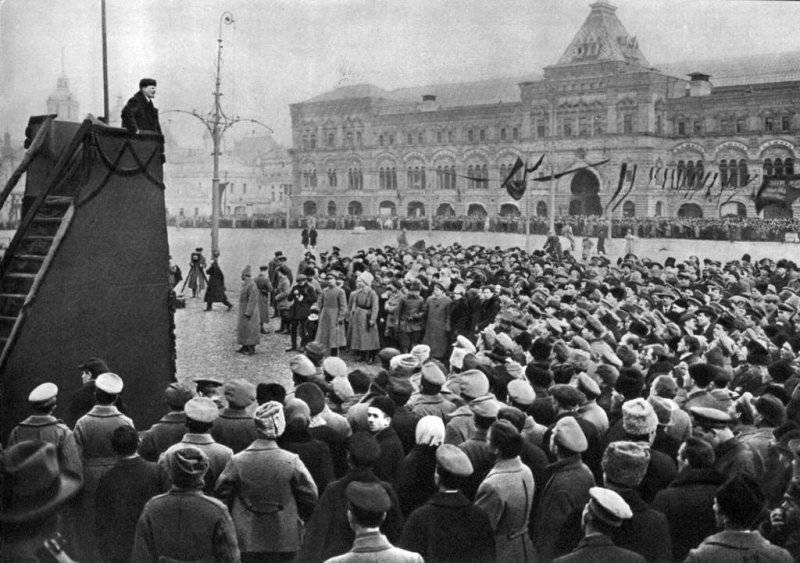
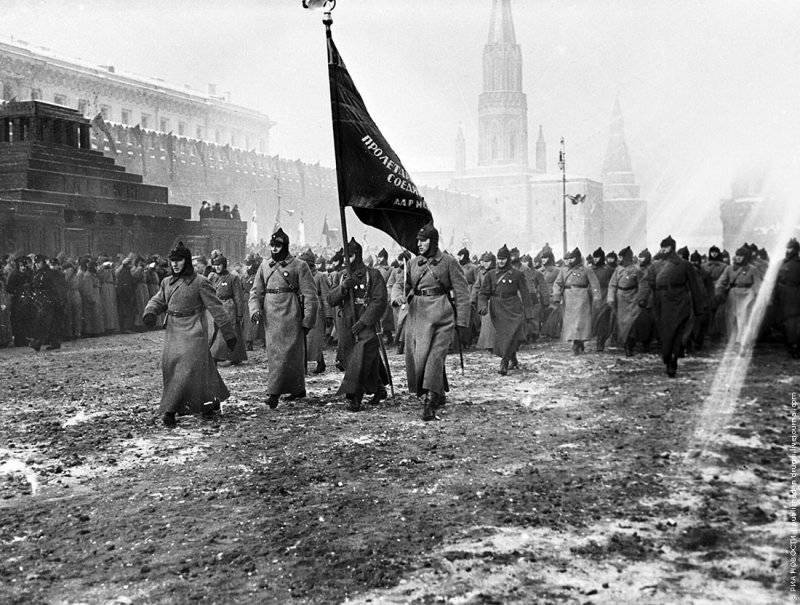
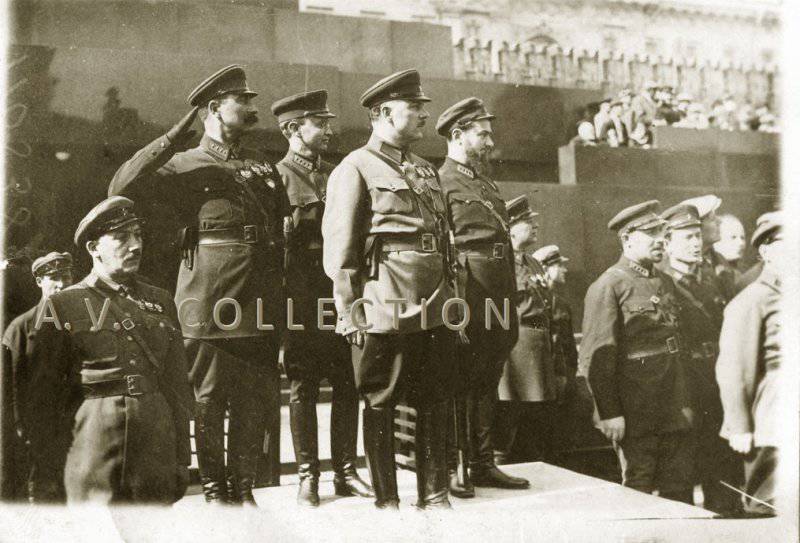
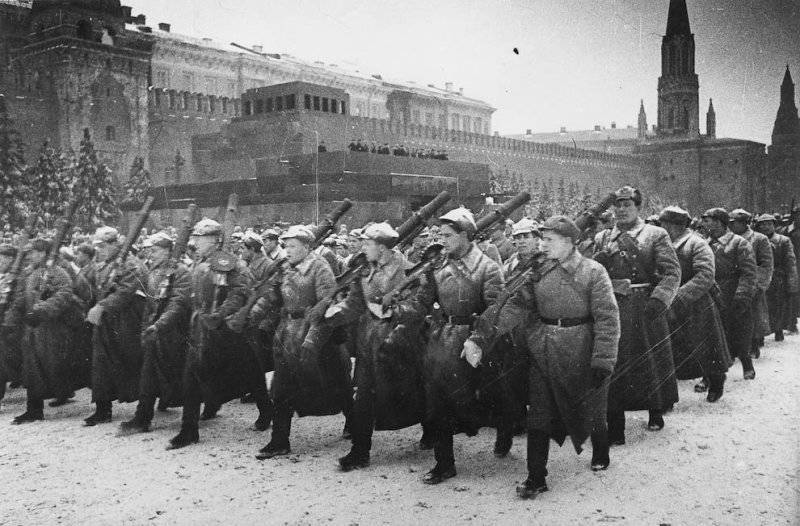
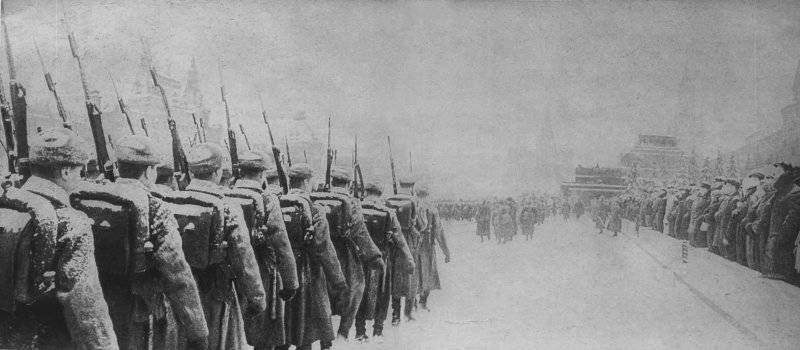
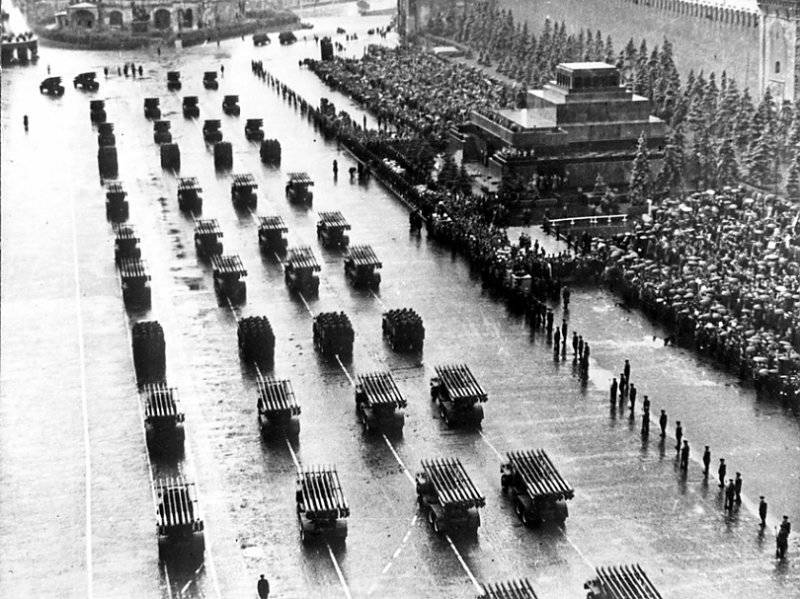
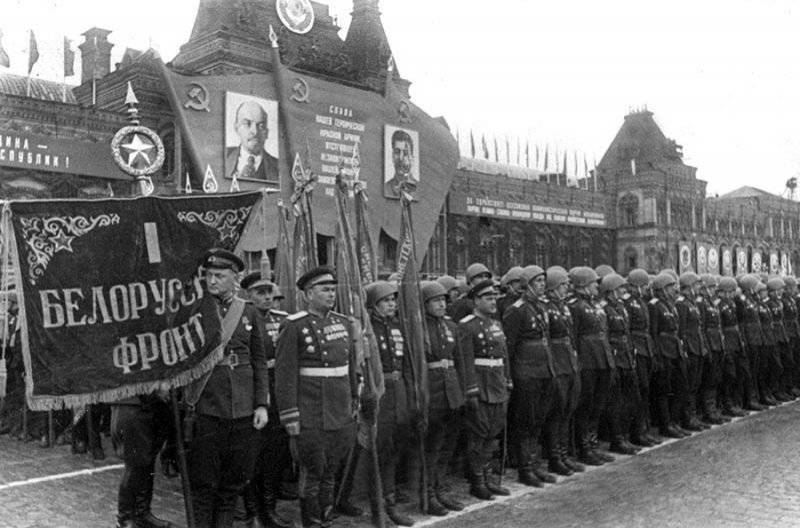
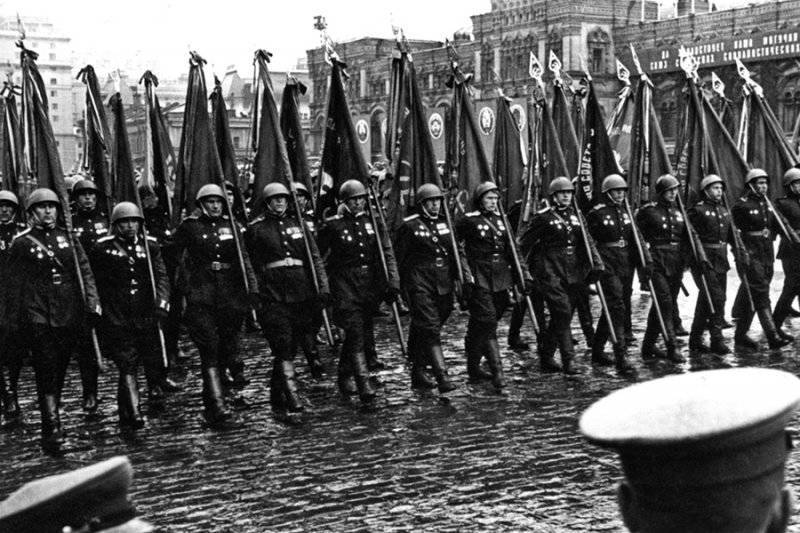
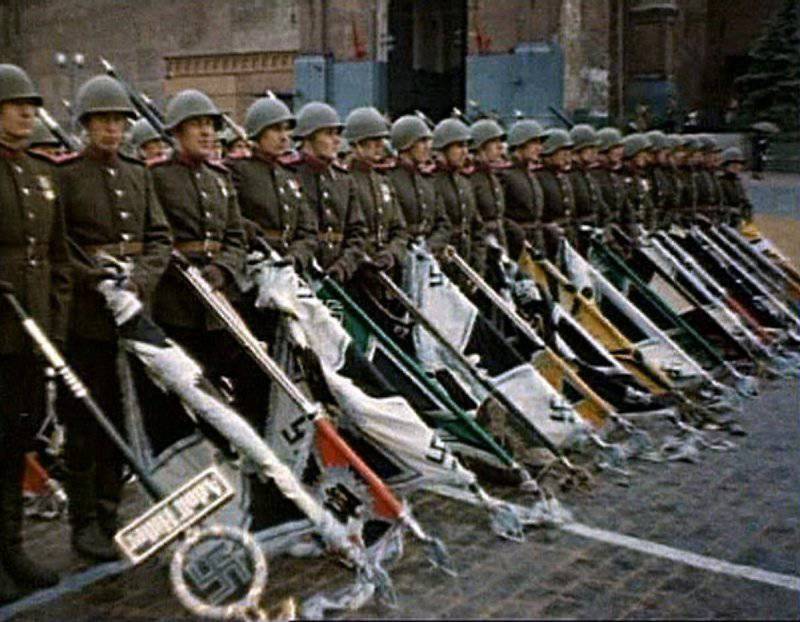
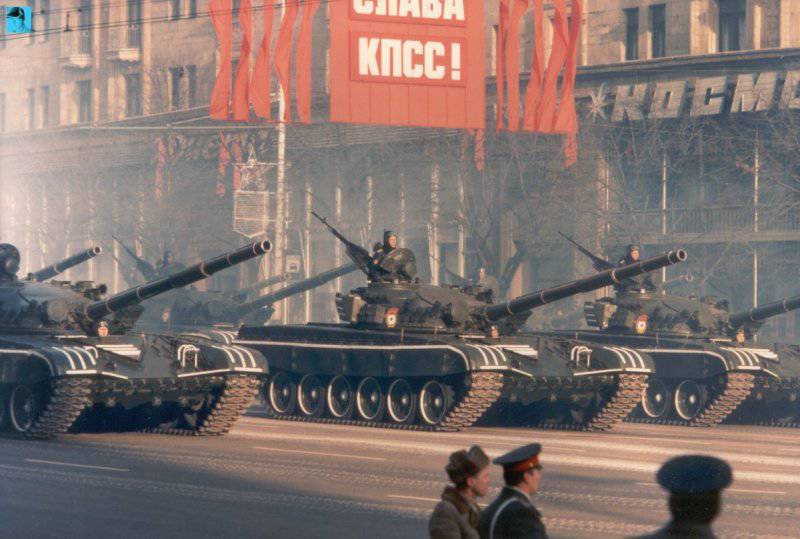
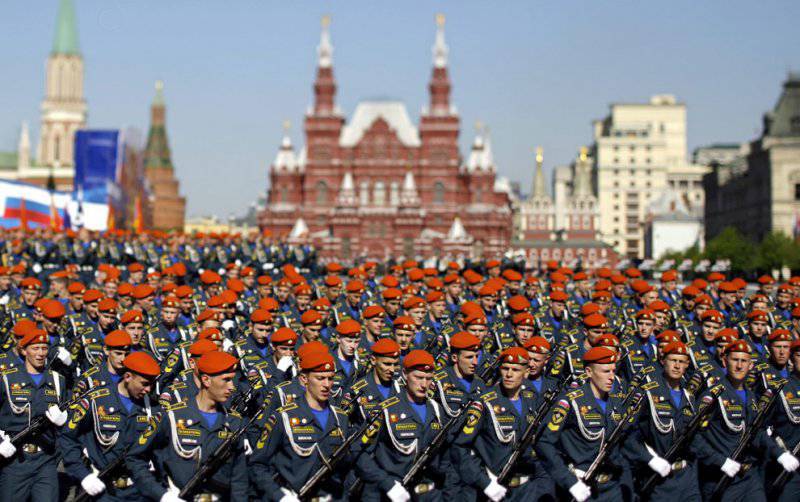
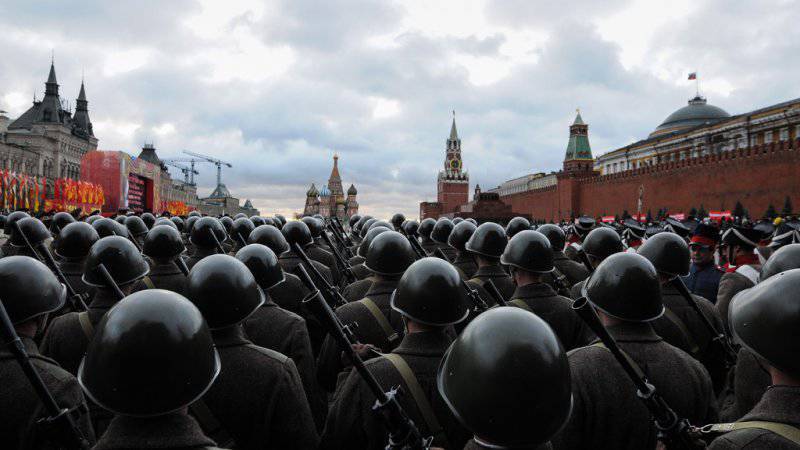
Information